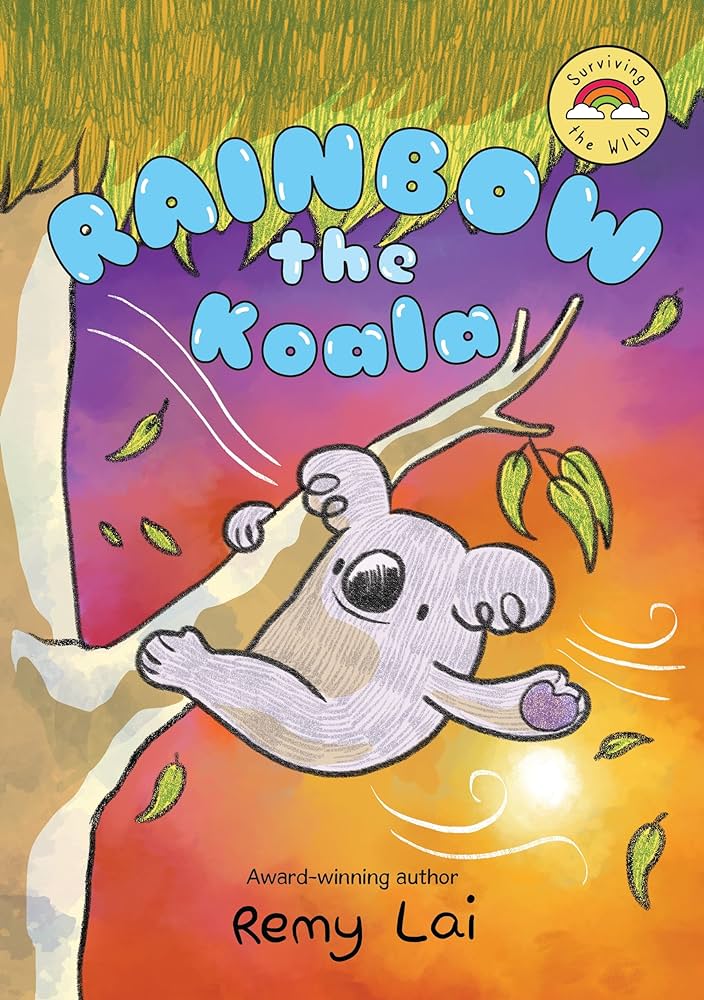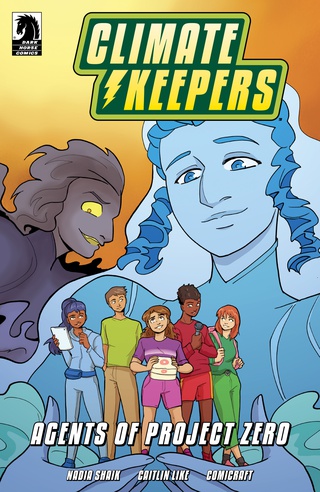“For centuries, our people have battled and killed the creatures from the fog. Now attacks on the village have started increasing. But using magic stones has made our task easier” — Varmod, Gert and the Sacred Stones, n. pag.
| Creator(s) | Marco Rocchi (author), Francesca Carita (illustrator), Jaime Richards (translator) |
| Publisher | Dark Horse Books |
| Publication Date | 2021 |
| Genre | Fantasy, Fiction |
| Environmental Themes and Issues | Animal Abuse, Animal Captivity, Animals in Danger, Anthropomorphism, Hostile Environment, Hunting |
| Protagonist’s Identity | Gert: White teenage girl |
| Protagonist’s Level of Environmental Agency | Level 3: Moderate, Plot-Driven Environmental Agency |
| Target Audience | Young Adult |
| Settings | Fictional fantasy setting |
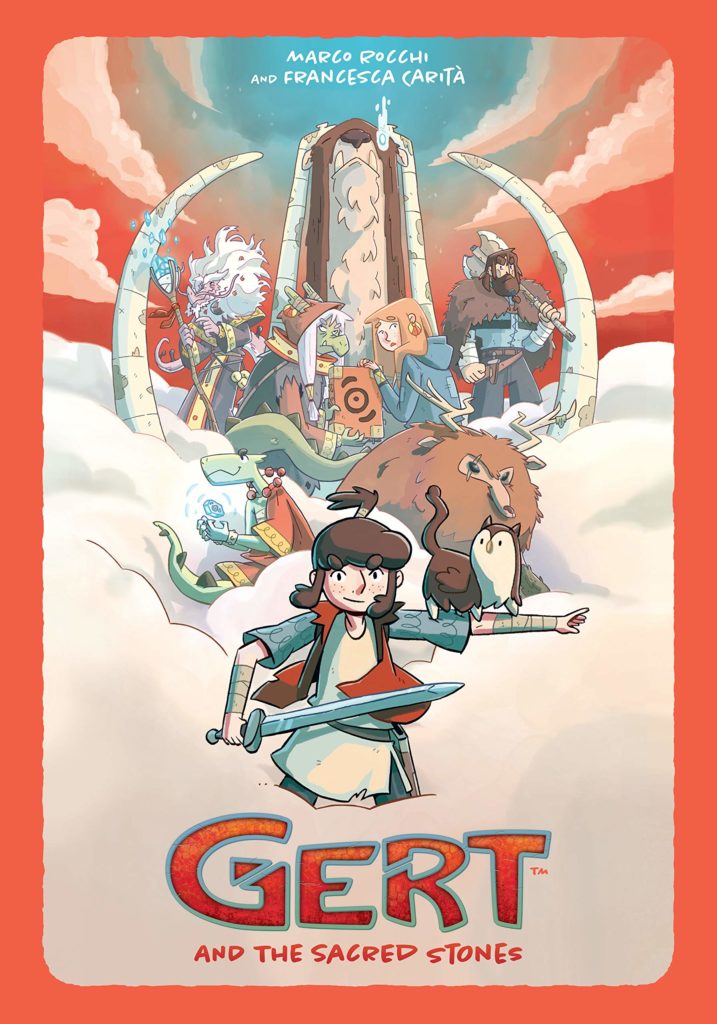
Environmental Themes
In Gert and the Sacred Stones, young protagonist Gert lives in a small village in a land shrouded with supernatural fog. For centuries, the village’s kunya, or human, inhabitants have battled and slayed fantastical, rage-filled sacred beasts, or monsters, that lurk in the fog. During Gert’s childhood, her mother Bia experimented with sacred stones that she believed could tame the beasts, but the village’s male beast slayers derided her efforts. However, when a child Gert encounters one of the sacred beasts while playing near her home, her mother successfully uses the sacred stones to calm it. However, the village’s hunters attacked the subdued animal, antagonizing it and causing it to kill both of Gert’s parents. After their deaths, Gert’s uncle raises the orphaned girl and uses her mother’s sacred stones for a more sinister purpose: to tame the beasts and then slay them while they are helpless.
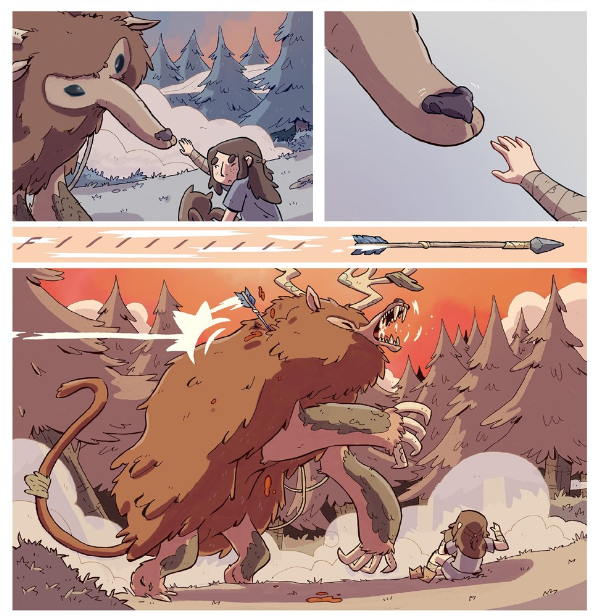
Determined to avenge her parents, the teenage Gert trains to become a warrior, even though her village forbids women from assuming the role of beast slayers. During an initiation ritual for teenage boys, Gert’s uncle sends the aspiring beast slayers on a mission to kill a molkhog, an anthropomorphic, lizard-like creature, and retrieve a sacred stone from it. Gert sneaks out to beat them to their goal in an attempt to prove that she is worthy of becoming a beast slayer. She finds two of the boys poised to kill Atheis, a molkhog, but, in an act of compassion, she interferes and captures him alive instead. She takes the molkhog back to the village to show it to her uncle. The male villagers react with anger, however, and try to force Gert to kill Atheis. Instead, she lights their meeting hall on fire and helps the molkhog escape, betraying the rest of the village.
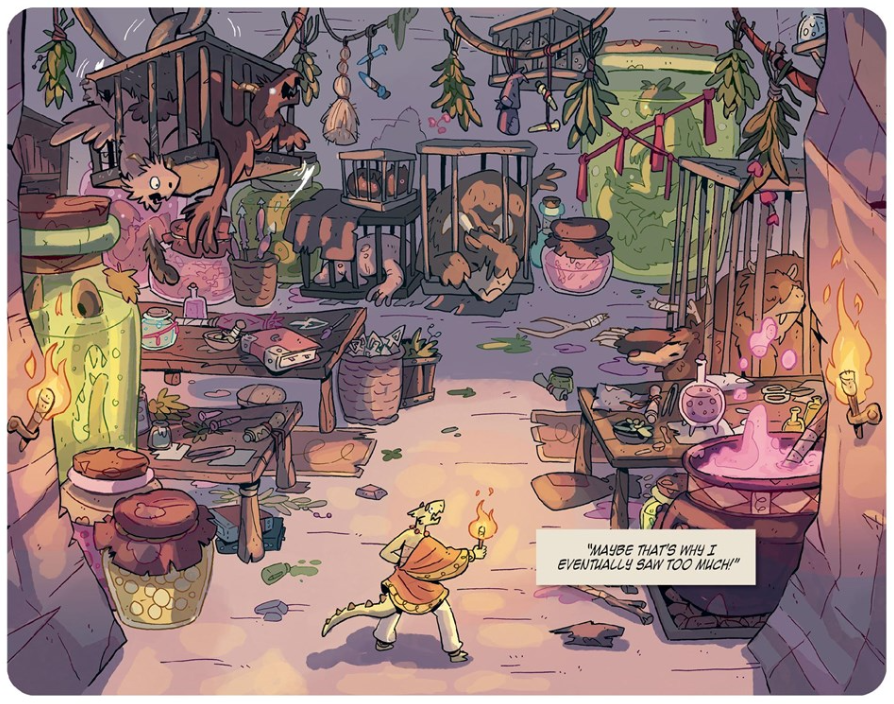
Together, Gert, Atheis, and Pook–a friendly sacred beast that resembles a cat/owl hybrid–set out on a journey to the molkhog capital city, where they hope to learn more about the research on sacred beasts that Bia was conducting before her death. On their journey, Gert learns that Atheis is an oracle who can sense the presence of the sacred stones. “Do you think I could learn?” she asks. The molkhog responds, “No, but maybe a sacred beast could. You kunyas are too far removed from nature!” (Rocchi n. pag.). As they travel, Atheis teaches the girl new ways to co-exist with nature. They encounter the sacred beast that killed Gert’s parents, but Atheis prevents her from killing it and subdues it with a sacred stone.
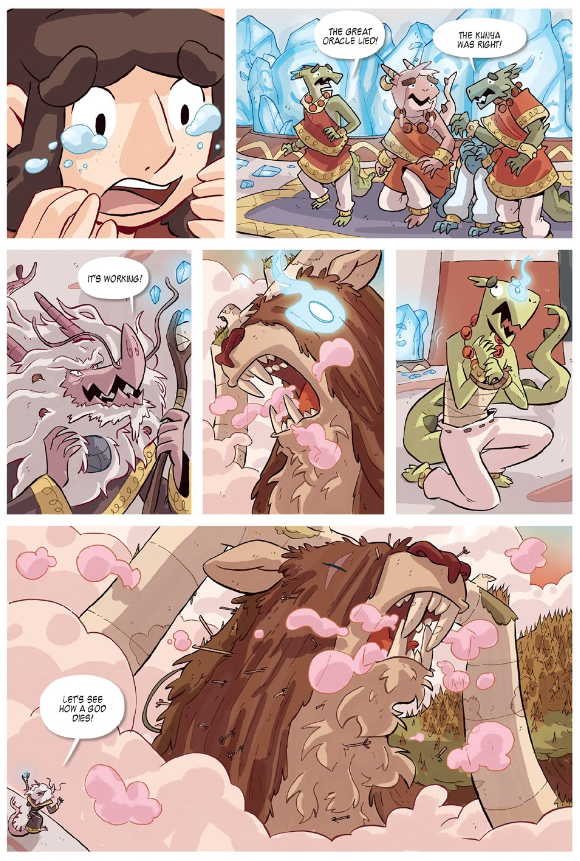
As the pair approaches the molkhog capital, Atheis reveals that the molkhogs plan to use their stockpile of sacred stones to summon and appease Kemon, a demon that they believe has caused the sacred beasts to rage and attack humans and molkhogs. However, Atheis was banished from the city after discovering sacred beasts held captive and tortured by the molkhog’s great oracle. He and Gert sneak into the city, but guards capture Atheis. Suren, a molkhog who corresponded with Gert’s mother, hides the girl and tells her about her friendship with Bia. Together, Suren and Bia developed a serum to calm the rage of sacred beasts, but Suren discovered that the great oracle altered their formula to poison the creatures and plans to kill Kemon rather than calm it. Determined to stop the great oracle, Gert seeks out the sacred beast that killed her parents and asks for its help, saying, “You killed my parents! Just as my people killed so many of you. Things have to change” (Rocchi n. pag.). Together, Gert and the sacred beast return to the city and attempt to stop the ceremony, but the great oracle successfully summons Kemon and gravely wounds him. In response to Kemon’s plight, all of the sacred beasts from the surrounding forest attack the city in an uncontrollable rage. Gert and Pook fight the great oracle and retrieve the eye that he has stolen from the wounded Kemon. They return the eye, saving Kemon’s life and permanently quelling the anger of all of the sacred beasts, allowing all of the species to coexist more peacefully. In the comic’s final pages, Gert travels back to her village and reconciles with her uncle before setting off to explore more of the world.
Gert and the Sacred Stones conveys positive environmental messages by challenging the celebration of war and violence and promoting peaceful and mutually beneficial relationships between nature and humans. Bia, and later Gert, both seek to understand and learn to cohabitate with the ferocious sacred beasts, rather than battling and killing them as most of the other humans and molkhogs do. Additionally, Gert and the Sacred Stones consistently attributes the sacred beasts’ anger to external forces–such as the beast slayers who cruelly attack the creature that kills Gert’s parents–to emphasize that the animals’ hostility is not an inherent trait but is instead caused by the careless behavior of humans and molkhogs.


